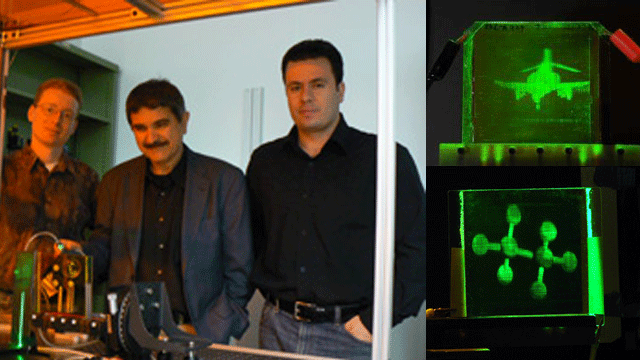Neuroeconomics: In Oxytocin We Trust

The concept of trust is in many ways the connective tissue of society—governing everything from our personal relationships to our common use of currency. Most, if not all, of the decisions we make every day rely on one form or another of trust. But what if our capacity for faith is simply the result of brain chemistry?
Economic researchers are uncovering the chemical triggers in our brains that spark feelings of trust—and using their findings to better understand how markets work. Paul Zak, a professor of economics at Claremont Graduate University, has spent the past six years pioneering the new field of neuroeconomics, which could potentially explain the neurological mechanisms that result in poverty and prosperity.
So far, Zak’s research has focused on oxytocin, a neurochemical known to flood a mother’s central nervous system during labor—in part to establish attachment for the child. Long thought limited to birth, research by Zak and others is now revealing that this chemical circulates in small doses in everyone, and is critical to creating and sustaining trust among people.
In a series of tests based on giving or keeping money, Zak found that when someone demonstrates that they trust you, your body releases faint traces of oxytocin, which creates a “fleeting signature of safety and care.” As well, when trust is shown to a person, their resulting higher levels of oxytocin make them more likely to show trust to the original person, creating an oxytocin feedback loop. In this way, “our brains motivate us to be trustworthy,” says Zak. “It’s a beautiful kind of system.”
Zak’s research has shown that low levels of oxytocin are released when people are given a 15-minute massage, when they make eye contact, when they watch a highly emotional film, and even when they tweet. As well, Zak recently took samples of a wedding party to see what patterns of oxytocin release would be triggered by the ceremony. Zak found the bride released the most oxytocin, then her mother. The groom came in further down the list. Zak says his research has found that people who release more oxytocin report greater satisfaction with life, better romantic relationships, more friendships, more sex, and greater trust.
Neuroeconomics departs from neurology in its desire to map how these trust patterns among individuals ripple out to result in macro-level consequences. With such an aggregated map of how trust circulates or stalls in a society, neuroeconomics might describe the robustness of nations’ economic development as well as the intricacy of institutions that fill in the gaps where trust fails.
One issue that began Zak’s work in this new field was research in the late 1990s that found an unexplored connection between trust and national prosperity. Data showed that high trust exists in countries that are, by and large, rich or fast growing. Countries in which trust is high have effective governments, says Zak: “They have very tight social structures, people interact very nicely with each other, they don’t have a lot of divisions.” A 2007 study by the Pew Research Center found 45% of Americans said they trust each other—a large percentage compared to many other countries, which hover in the single percentage points.
Linking the data to the discovery of how oxytocin-led trust cycles can harness or hurt economic transactions toward prosperity, Zak shows how trust becomes the “great summary measure of a society in which things are working well.” However, as he notes, lack of trust is also a measure of to what degree things are broken.
Trust isn’t universal or perfect, and for good reason. Whereas the expectation of trust can facilitate a broader range of economic engagement among strangers, misplaced trust is a recipe for developmental gridlock. Therefore, institutions develop to cover the gaps in trust. These institutions include the legal and corrections systems, which enforce agreements and allow economic transactions that contribute to overall prosperity. Without a baseline of transactional confidence, says Zak, the size of the market shrinks, decreasing prosperity as people prefer to deal primarily with small, trusted groups. This, says Zak, is why certain countries have remained mired in poverty.
National trust levels, especially around economic transactions, also offer a mean method of forecasting. China, for example, has markedly high levels of trust, yet the market-oriented way in which the nation is leaning will, according to Zak, build the economic-led trust around individuals. This should in turn loosen the centralized authority in favor of individual, trust-led market commerce.
In another example, Zak says programs such as microfinance and micro-entrepreneurship are “a way to take economic power and bring it to the individuals even at the lowest levels.” This builds the necessary foundation of economic trust that drives development, and eventually prosperity.
More Resources
—Zak, P. “Personal and Impersonal Exchange, Trust and Growth.”
—Zak,P. “Introduction: Moral Markets – The Critical Role of Values in the Economy.”
—Penenberg, A. “Social Networking Affects Brains Like Falling in Love.” Fast Company.
—Center for Neuroeconomic Studies at Claremont Graduate University.





